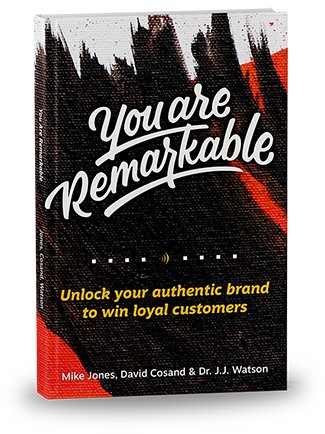Marketing is simple, but it can feel complicated with all the BS you have to cut through. Let me simplify the checklist for a coherent strategy. Because if you understand how the strategy works and the job of each component, you can be a lot smarter in how you allocate time and budget.
Watch our video on how to own strategy to get the most from your marketing team..
Complication Hinders Strategy
If it makes sense to you, it can work. If it doesn’t, you’re not in control. You have the right to make sure it makes sense to you.
In the marketing world, people throw around a lot of words that represent important principles. This can make it hard to gain a sense of proportion — the very thing you need as a leader since you’re responsible for how money is spent. Luckily for you, all those words they’re using track back to basic principles. And if you can understand basic principles well, you can ask questions and hold the entire process accountable.
Let me give an example. I remember being a project manager in an innovation lab. I made a suggestion to one of the engineers that we make the program do a certain thing. He said it would be hard (read: impossible). But I made an argument that you actually COULD do it. And it wasn’t because I was smarter than the engineer, but because I had a clear big-picture view of how technology works. Once I did that, he realized what I really meant and was able to do it.
The bottom line is that, if you can make a logical argument, you’re coding…but you’re doing it in English and at a high level. The same thing is true for anything, including marketing.
If you make clear, logical argument for how a person would find out about your product or service, gain an interest in you and eventually buy, you have what marketers call a “funnel.” And funnels are simple.
Research (or at least logically test) Your Assumptions
Research starts with imagination. I call it a “working hypothesis.” How should it work, what are the steps that should work, and how will we know if it worked, so we can improve on it?
Imagination, via your working hypothesis, focuses your research.
In other words, instead of trying everything, you use your judgment to determine what’s the most likely thing to work. Then you test that working hypothesis.
So the first step becomes: logically lay out the funnel, before you do any research. Then you start asking questions about your funnel, like “What assumptions am I making?”
How do you build a working hypothesis? Talk through the following:
- Who is my target audience? Is it big enough?
- Who are my competitors for this audience?
- Why do they care?
- Where do I find them?
- How much will I need to spend to get one person to buy?
If these things make sense to you, then make sure you know how you’ll measure and then run it.
Of course, there are times when you need to do a lot of research and prep, like if you’re putting a big bet down. But most times, you build your hypothesis, test it, and make changes until you get it refined. Because the sooner you can start doing it, the sooner you can start really learning.
At Some Point, Go with Your Gut
Let’s take a second to drive this home.
Research isn’t always practical, and it’s possible to do too much research. After all, at some point, you reach diminishing returns if you wait too long to advertise or build your funnel because you want just one more research question answered.
At some point, action is required. And when you get to that point, make sure your funnel is simple enough to understand, and that it’s logically coherent, based on what you think you know. Then continue to run analytics to find out if it’s working in the way you thought. Then adjust over the next few months.
The minimum viable campaign needs only to be coherent.
Funnel Example
Ads, like on social media and pay-per-click. They might need to see these a few times (7-10?) before buying.
The following represents a funnel. The first bullet is the top of the funnel (where people initially hear about you). The bottom is the last step they take before/when they enter the sales process.
- Advertisements. They see your ads online. The ads point to your landing page.
- Landing page. They arrive at your landing page, which is optimized for them and explains your offering really well for that audience. This page funnels them to your “buy now” button at the bottom.
- “Buy Now!” The “buy now” button on the page gets them to the transaction page.
- Transaction. Once they’ve purchased, they’re now at the bottom of the funnel.
Take Ownership
You might think that, by focusing on the big picture, you’re doing your team’s job. But if you understand the big picture, you can hold them accountable — and help them do a better job.
Most importantly though, knowing the big picture helps you make sense of each suggestion they give you. And if you understand it, you can help them make the best decisions possible with your money.
And that’s really the goal.



